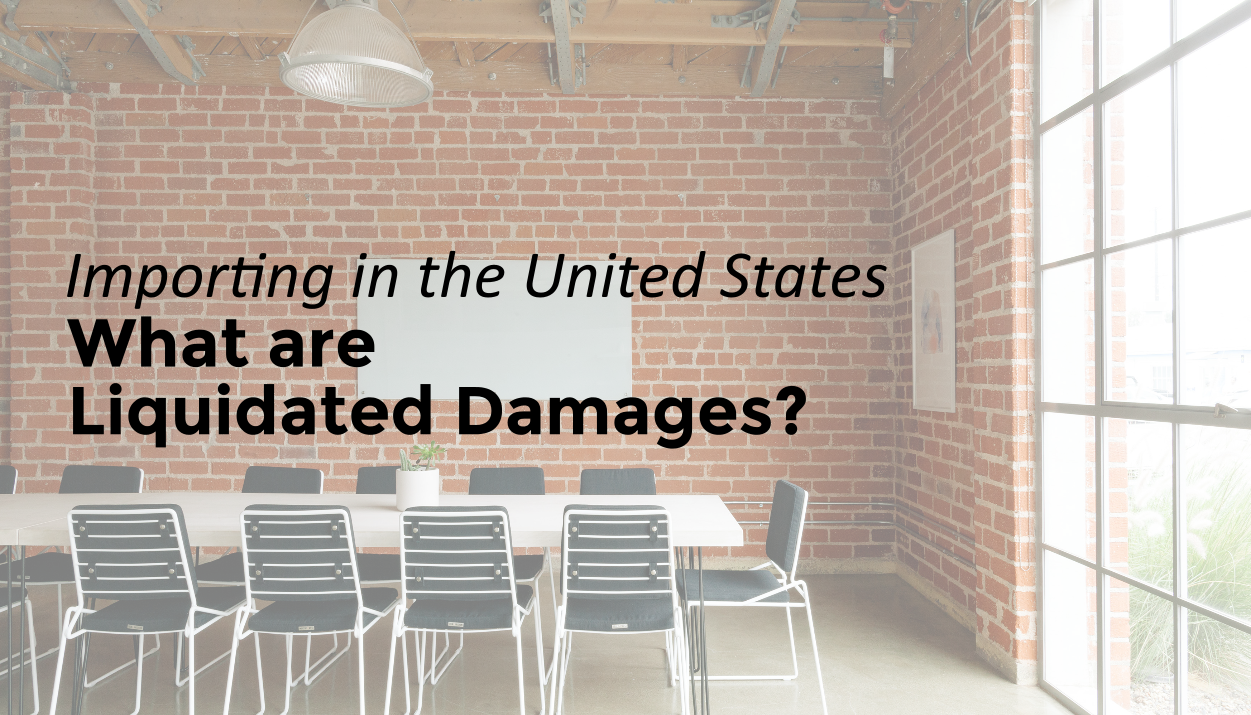Liquidated Damages is a frequently used term in the international trade world and can be a confusing topic for small to medium sized importers. TRG is here to help clear away the confusion and, ultimately, prevent a claim.
Entering into the international trade world comes with a rather large learning curve. Simply familiarizing yourself with the process of importing in the United States can take a large amount of time and patience. Even when you begin to feel like you have an understanding, you discover a new term or part of the process that brings you back to square one.
Unfortunately, there are parts of this process that many importers remain unaware of until something goes wrong and they receive a notice from Customs and Border Protection (CBP). This notice typically refers to a claim on the importer’s Customs bond which, ultimately, is a fine or fee that must be paid to Customs. The two most often discussed claims are liquidated damages and supplemental duty bills, both of which can arise after your entry has been officially liquidated.
What Are Liquidated Damages?
Liquidated damages are predetermined penalties assessed against importers that have violated the conditions of their Customs bond. An importer will receive a liquidated damages claim, from the port at which the violation occurred, in the event that they fail to adhere to the regulations set by CBP or the regulations set by other partner government agencies CBP enforces on behalf (such as the FDA, EPA, etc.)
How Much Can Liquidated Damages Cost an Importer?
Outlined within the terms of your Customs bond conditions are a few specific amounts tied to the scenarios that would result in a claim. However, these amounts can widely vary depending on the scenario and type of commodity imported.
For example, one condition of your Customs bond (19CFR§113.62(j)) states ‘The principal agrees to comply with all Importer Security Filing requirements…’. If this condition is not met, the principle is considered to have defaulted on the obligation and they will be required to pay ‘liquidated damages of $5,000 for each violation‘.
The example outlined above, however, is only one of many situation types. For a better understanding of the type of liquidated damages that can be assessed by an importer, we would encourage you to read through the bond conditions section of the Electronic Code of Federal Regulations, specifically 19CFR§113.62. If you do a quick search through the test for the term ‘liquidated damages’, you can quickly get an idea of the different scenarios that can result in this type of claim.
How to Handle a Liquidated Damage Claim
In the event that CBP finds an importer in violation of the conditions of their Customs bond and sends notice of liquidated damages, there are few steps that can be taken to mitigate the claim and reduce the amount of the fine paid to Customs.
Within 60 days from the date the notice was mailed to the bond principal, a petition for relief from liquidated damages can be filled. However, it is important to note that a petition is to be submitted if the importer feels there are extenuating circumstances. Relief will be granted by Customs only if the petition demonstrates the violation did not occur or was the result of Customs’ error. The degree to which Customs will allow mitigation is completely determined by Customs’ guidelines and the circumstances of the specific case.
When filing a petition for relief, it is important to consult a professional that has an expertise in handling claims from Customs and Border Protection. At TRG, our claims team specializes in helping our bond costumers mitigate any claims that may be issued and monitor the progression of the mitigation process. Bond holders with TRG also have the added benefit of our claims team receiving their notices directly from Customs. This way action can be taken immediately and efficiently when a claim arises.





![[Webinar] How Could Changes to De Minimis Impact Your Company?](https://traderiskguaranty.com/trgpeak/wp-content/uploads/2025/05/trg-how-de-minimis-impacts-customs-bond-webinar-400x250.png)

![[Webinar] United States Reciprocal Tariffs – The What, Why, and How](https://traderiskguaranty.com/trgpeak/wp-content/uploads/2025/04/trg-webinar-reciprocal-tariffs-400x250.png)